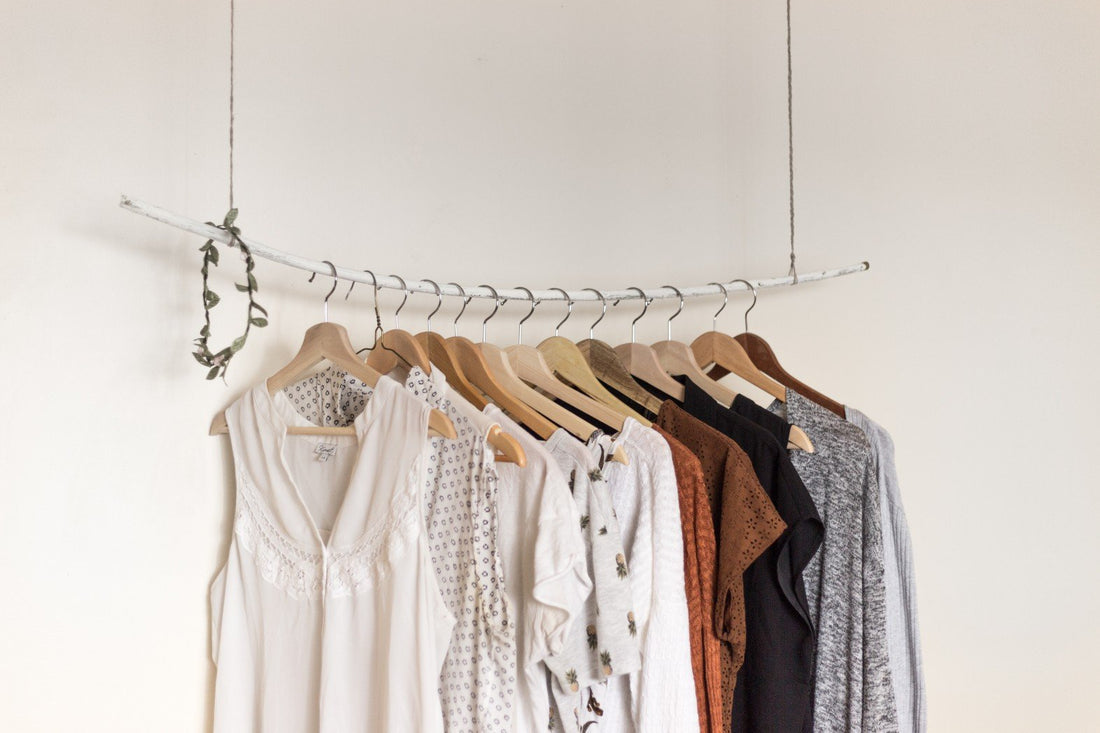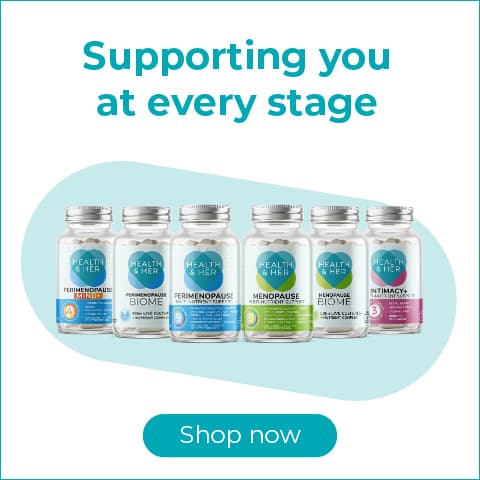Here are our stylist’s secrets to manage your wardrobe even if your temperature’s out of control.
Have you ever ended up in a meeting feeling like you’re boiling alive? Been so desperate to cool down that you’ve stripped down to your vest and just styled it out (or hoped you did!)? Felt cool and confident as you stepped out of your home, only to feel like you’ve run a marathon in ski-suit by the time you arrived at that important meeting? Here are Gilly Woo’s secrets of staying stylish when you’re feeling hot, hot, hot…
Around 75-80% of women going through the menopause will experience hot flushes, and they can vary in severity and frequency from a minor annoyance once or twice a day to a stressful struggle every fifteen minutes! The good news? There are many things you can do to alleviate this symptom and make hot flushes easier to deal with, starting with your clothing choices.
Here are some of the simplest changes that have helped many women struggling with hot flushes alter the way they dress for work and play.
Knowing the properties of different materials and picking certain fabrics, styles and combinations when choosing what to wear can help you feel more comfortable, cool and stylish before, during and after a hot flush.
Why hot flushes can be a problem
Hot flushes can be very distressing. You may feel like your face is getting redder and redder and everyone is looking at you, but any visible flushing of your face and chest will rarely appear as bad as it feels.
It sounds simple, but look in the mirror next time you have an episode to put your mind at rest – knowing this has helped many women!
Here are supplements many women have chosen for hormone regulation.
There’s absolutely no reason why you can’t look and feel stylish and comfortable during the menopause. By following a few simple rules when choosing clothing to wear for different occasions and activities, I’m hoping those pesky hot flushes will have less of a negative effect on your life.
Style tip #1 – get fabric savvy
I’ve been a dressmaker and stylist for over 20 years and in my experience people are often confused about the difference between fabrics (ie: cloth) and fibres (ie: the raw material that the cloth is made from). There are natural fibres such as cotton, silk, hemp, wool and cashmere and synthetic fibres, such as polyester, nylon, acrylic and spandex. Then there are ‘inbetweeners’ like viscose and rayon which are not synthetic, (they are made from heavily processed plant derivatives), but are man-made fibres so not natural either. Is natural always best? Breathability is an excellent property in a garment when you are prone to experiencing sudden acute episodes of intense heat. This is because the fabric will let air get to your skin which will help regulate your temperature. So it is important to choose clothes made from breathable fabrics, but how do you know which clothes are breathable? Most people assume that natural fibres make more breathable textiles than synthetic fibres but this is not always the case. How to check breathability In general tighter knits or weaves create less breathable fabrics. Look for thinner materials and finer yarns. Try holding fabric up to the light, the more light that passes through, the more breathable the fabric. Balancing function, feel and practicality Natural fibres tend to feel nice against the skin and often feel more luxurious than synthetics but synthetics are usually easier to care for and more durable. They also keep their shape better after washing and drying. For this reason I recommend looking for blends such as cotton with a percentage of Lycra or polyester, or a silk/viscose blend, to find out what your clothes are made of just check the label. As a general rule avoid fabrics that feel particularly stiff or plasticky as they will likely make you sweat.
Here are cooling night clothes for menopause.
Style tip #2 – let’s talk about sweat & exercise
Regular exercise is a good idea for everyone, but particularly for menopausal women. Exercise stimulates our ‘happy hormones’ making us feel generally better as well as helping to keep weight stable, joints supple and loads of other good stuff. Here are some of the best exercises for Menopause. The choose best clothing for your workouts consider how moisture-wicking, quick-dry fabrics can help you feel fresh throughout.
Merino wool is preferable to nylon and polyester as is doesn’t retain odour like synthetic materials. Don’t be fooled into thinking that all wool is hot and itchy! There are plenty of marvellous summer weight merino wool blends out there perfect for the gym and casual wear. Fit wise it’s a good idea to wear your sports kit reasonably snug. This will offer some support as well as wicking sweat away from your skin, helping you feel dry and comfy. If you feel self conscious in fitted clothing you can wear a loose swingy vest or T shirt made from a very fine flowing fabric as a modesty layer.
Go for your favourite colour or black, but avoid grey marle (unless you want to show off how hard you’ve been working!) because any wet patches will go dark and be very noticeable. Of course you can apply this advice to your everyday wardrobe too. A form fitting camisole or tank top under a more flowy tunic or wrap top is a great smart/casual look.
Here are yoga recommendations for hot flushes in menopause.
Style tip #3 – go with the flow
Flowing fabrics are generally a good choice for your everyday wardrobe. Where possible look for garments with a roomy armhole This helps avoid the dreaded sweat patch and is generally less restrictive and more comfortable. Choosing viscose, rayon or a blend could be better than pure silk or cotton because natural fibres will take longer to dry. Just check the labels in your clothing to see what garments are made from. If you struggle to find a deodorant that works adequately try one formulated for men. I’ve been using men’s deodorant for years because I think it’s more effective, though I am baffled as to why the formula would be different for men! There are also lots of great natural products on the market which don’t block sweat glands like chemical deodorants do.
Layering
Lightweight flowy fabrics are also super for layering. If you feel self conscious about bare arms or cleavage be sure to have a lightweight cover-up under your sweater on in your bag incase you feel the sudden need to remove your sweater or jacket.
Protection from sweat patches
For smarter more fitted garments you could add some little cotton patches to the armpit area if you are worried about sweat patches. You can buy these from most haberdasheries or online and they just require a couple of tacking stitches to apply. You could even use small safety pins if you don’t have a needle and thread. They will help to absorb any moisture and stop it showing on the outside of your outfit and they can be easily removed and thrown in the washing machine so are great for dry clean-only garments too.
Add a little silk to your style
A pure silk scarf can be a helpful item to have in your wardrobe. Silk satin feels cool to the touch (therefore it’s also a great lining fabric for coats and suit jackets.) The softness of the fabric feels luxurious and comforting against skin. Scarves are fabulous for adding a splash of colour to an outfit and great for covering a flushed neck and chest if you feel the need. It’s an easy, small, light weight, item to keep in your hand bag in case you ever feel the need for it and wrapping it around your neck may help make you feel warmer if you suffer from chills after a flush. Another handbag staple might be a cooling water mist spray. This can provide instant relief and a good friend of mine swears by it!
Style tip #4 – be party prepped to look and feel great
Don’t avoid parties because of hot flushes! Choose occasion wear that you feel fabulous in and if needs be, get it altered to make it more suitable for you. Find a good local dressmaker and get armholes widened by an inch or neck lines lowered. If your skin feels sensitive during a flush, I would suggest avoiding big heavy necklaces. Perhaps choose a fabulous pair of earrings or a bracelet instead. A heavy necklace could intensify any clammy feeling or make you feel hotter. This also goes for high necked styles of tops and dresses. A nice scoop or a V neck will let the air get to your skin, but if you like the look of a high neck you could choose styles with sheer panels, or get your dressmaker to add them. A spinning ring can be a nice finishing touch if you sometimes feel a little anxious in ‘high stakes social situations.
Here are menopause make up tips for hot flushes.
Top tips for staying stylish, fashionable & cool
So to summarise, my top tips for dressing to cope better with hot flushes are:
- Choose breathable, moisture-wicking fabrics
- Wear airy styles with roomy armholes
- Invest in a silk satin scarf or two
- Avoid grey marle or any fabric that changes colour when it’s damp
- Get some cotton arm-pit pads
- Look for silk satin lining fabrics for your tailored clothing
- Avoid any plasticky or stiff feeling fabrics and cloth with a very tight weave
- Finally, find a good local dressmaker to make any necessary alterations to you favourite clothes!
Remember help for menopause symptoms is available, here is CBT for hot flushes that could help you relax and minimise the impact of hot flushes.
About Gilly Woo
Stylist and dressmaker Gilly Woo has worked with hundreds of women to help them look and feel fantastic, whether they’re stepping on to the red carpet, down the aisle, or out in style.
Gilly Woo – known to her family as Gill Cockwell – began her sewing career at the tender age of six and was sketching designs and fashioning garments by the time she was ten. Since 2000, she has built a brand synonymous with quality, individuality and style – though most of all, she helps women find and express their most confident, fabulous selves. From dresses cut to dazzle for brides who use wheelchairs to red carpet looks featured in magazines and worn to The National TV Awards Gill’s portfolio is as diverse as the people she’s worked with. She’s an experienced stylist on magazine photo shoots and catwalk shows, has taught hundreds of people to sew, and has even stepped back in time on TV.



